One-on-One With Artist Tom Everhart
By Delphine De Causans for Haute Living Magazine
May 23, 2013
I recently had the honor of meeting Tom Everhart at an opening of his new exhibition organized by the AFA Gallery. Tom is a really nice and interesting artist who’s willing to talk about his art, making himself easy to reach. It was a real pleasure for me to learn more about his art, about him and the way he works. In 1980, Tom was introduced to cartoonist Charles M. Schulz, the man behind the beloved Peanuts comic. Schulz taught Tom his signature style, and made him the only fine artist authorized to use his characters. Since then, Tom’s Peanuts-themed paintings have become as iconic as the comic. “I never made it past that first blown up drawing of his strip. I sat in front of it for hours. I don’t even remember leaving it,” Everhart said of his inspiration. Here is my one-on-one with this incredible artist:
How did you come to becoming focused on the Peanuts?
It was after a long relationship with Mr. Schulz where he shared his teachings of his strategies of process and picture making.
As an artist known for works featuring characters from Schulz’s comic strips Peanuts, would you consider yourself more like a painter or like a cartoonist?
I have absolutely no background in cartooning, so the only thing I consider myself is a painter.
How would you position yourself compared to artists such like Roy Lichtenstein, whose paintings feature comic-style speech bubbles, or the Japanese artists who draw inspiration from Manga comics?
Well the only thing I have in common with Lichtenstein is that a lot of our imagery is based on cartoon subject matter but his painting were predominantly concerned with popular culture and graphics that accompanied that period of time where as my work is about events in my life.
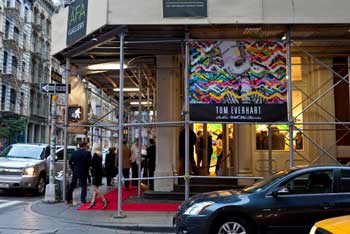
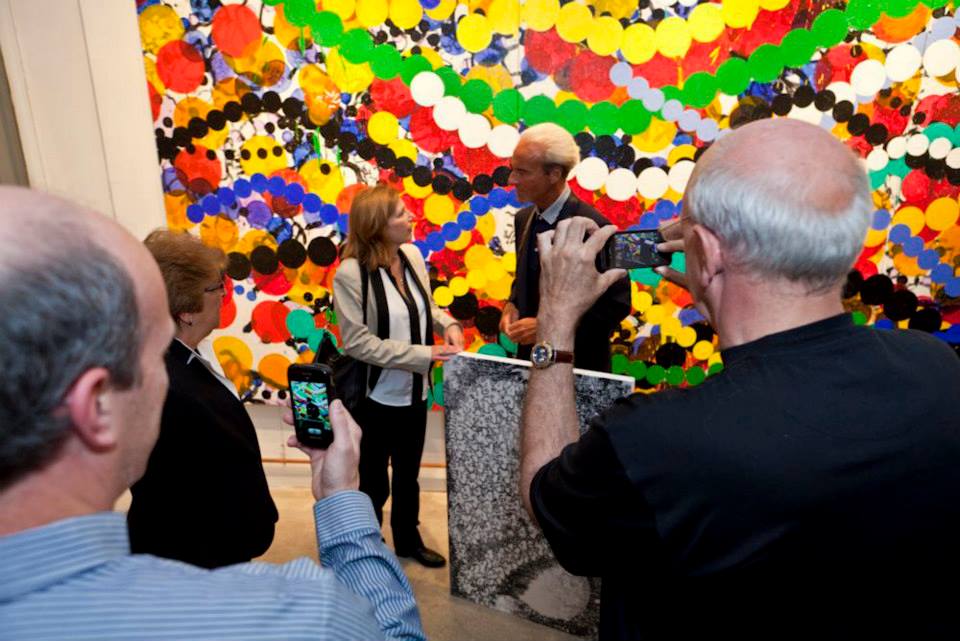
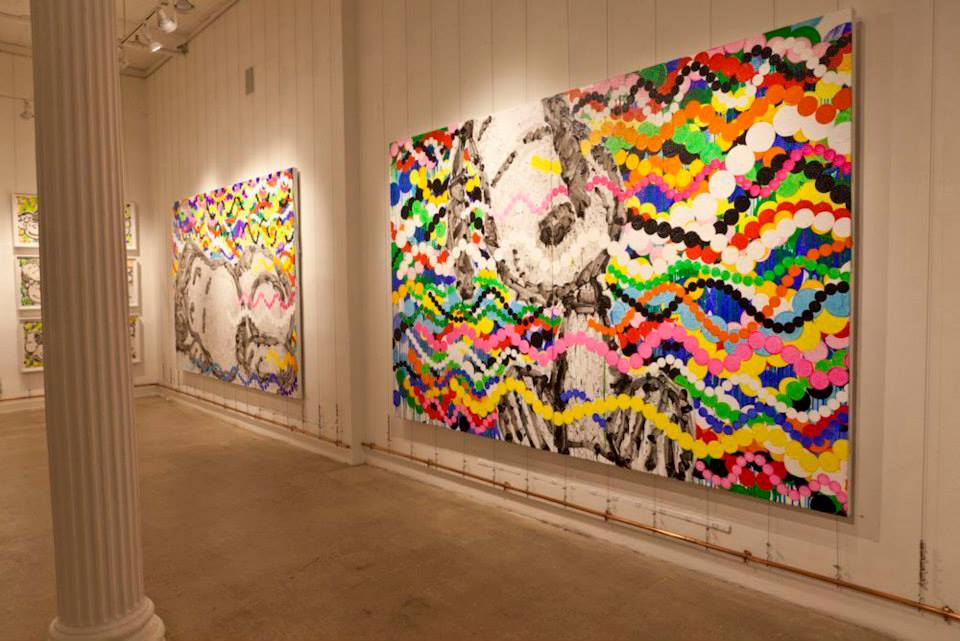
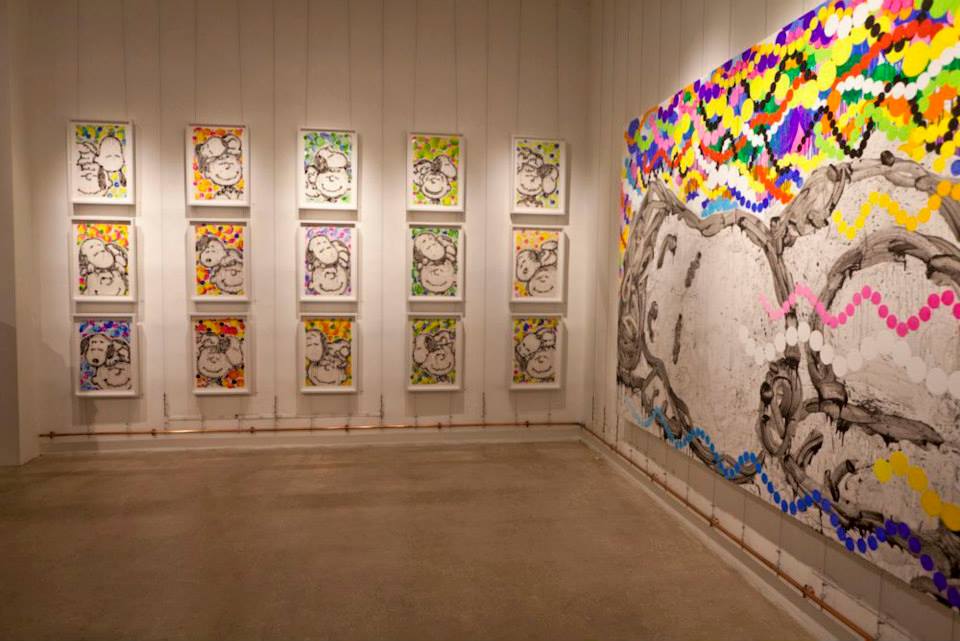

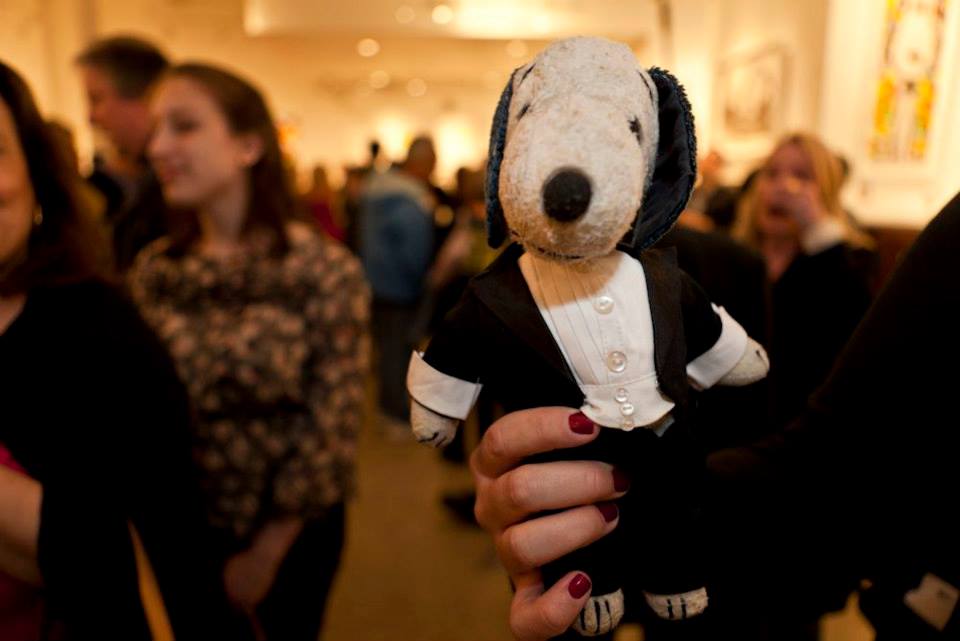
Do you paint directly on the canvas or does your work require a first preparatory layer?
First there is a plastic material that is tightly stretched on to the painting frame which is composed of aluminum support bars. Then there is a tightly woven canvas stretched over top of that, it is then gessoed twice. After that two coats of clear varnish are applied. This procedure is necessary to achieve a hard wood panel like service that will accept the physical beating that is to come.
Do you sketch your creation prior to painting it? Either on the canvas itself or on paper?
Much like the Schulz procedure of producing a pencil line sketch first, a light gray varnish wash initiates the first marks applied to the surface. Before the varnish layer is completely dry the black paint strokes are then begun. Once these ink like marks are applied they began to play with the surface. The eye might see one at one time and another at another time. This is how I think space is made, each mark asks the eye to sense a new time.
Are you yourself a big fan of comic strips?
Oddly enough, even throughout my entire childhood, I was never a fan of cartooning which I know most people find extraordinary considering my subject matter today. What I was impressed with was comic books and I think it was those big fat black lines that were empty waiting for color much like Schulz’s drawings.
There is a new exhibition of your work called Rollin With The Homies on at the AFA Gallery. Could you tell us a bit more about it?
It was my intention to construct this show built on confessions. Confessions of creative thinking and where it came from and there are smaller bodies of work in the show that make up the entire body. Each individual smaller body of work references one of the sources of those influences like art history, the traditions of painting and social reconstruction.
For more news visit Limelight Agency.
